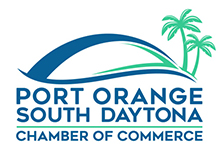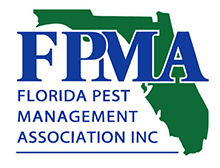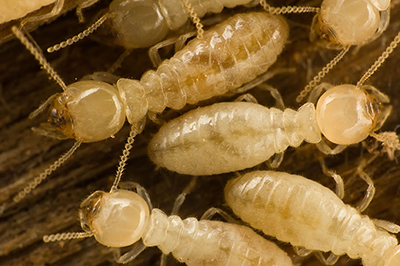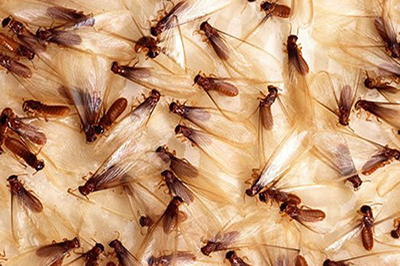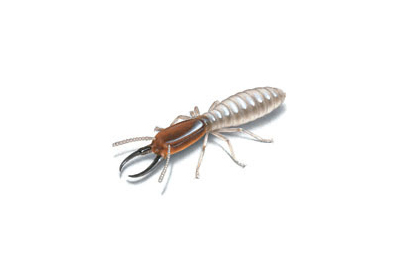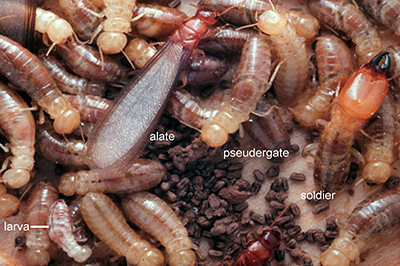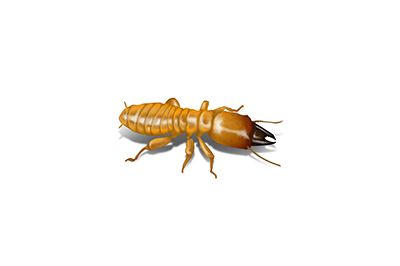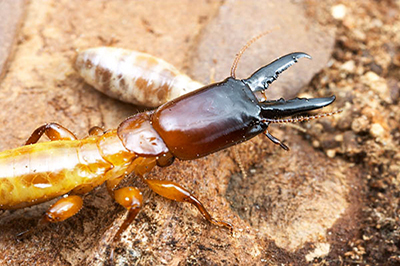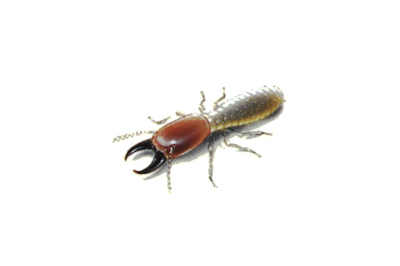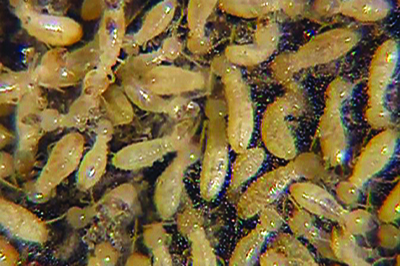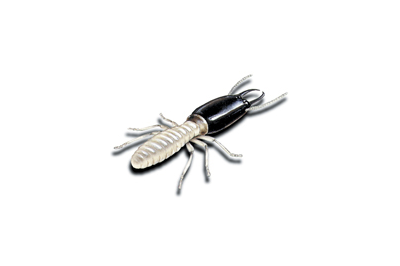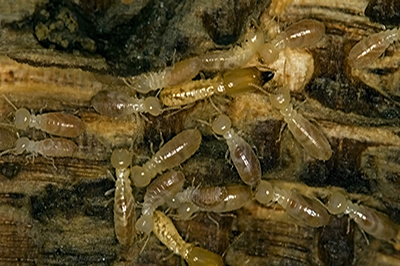Some Termite Basics
There are over 40 different species of termites found in the United States, each of which falls into one of the three main types – subterranean, drywood or dampwood. Because different species require different control methods, it is very important that your pest control expert correctly identify the termites before treating an infestation.
Drywood Termites
Drywood termites are one of the most devastating wood destroying organisms on areas where a dry and warm climate is prevalent. These Termites are very likely to be found on exposed wood, buildings structural framing, fences, decks and patios. Drywood termites love to build colonies on, as their name implies, dry wood that is usually above the foundation or ground level. This type of wood destroying organism is not very likely to be found in areas that experience freezing temperatures. Drywood termites are found mainly in the humid coastal areas of the southern states of the United States from Virginia to Florida, through the desert southwest, along the Pacific coast to northern California and in Hawaii.
Signs of Drywood Termite Infestation:
Swarms are often the most noticeable sign of any termite infestation. However, drywood termite swarms can be so small that they may be overlooked. Other warning signs for drywood termite activity include groups of discarded same-size wings and small mounds of fecal pellets (frass).
Dampwood Termites
Florida dampwood termites are found throughout Florida and the Florida Keys. Popular habitats include woodlands, mangroves, and some urban environments in southern portions of the Sunshine State. Because of their moisture requirements, structural infestations of dampwood termites are associated with sources of free water. These include wood-to-soil contact, wood exposed to roof leaks, or wooden siding or ornamentation exposed to rainfall or sprinkler irrigation.
Signs of Dampwood Termite Infestation:
Signs of dampwood termite infestation include small swarms of flying termites and fecal pellets. Both dampwood and drywood termites leave behind small mounds of fecal pellets. However, drywood termite pellets are six-sided and dry, while dampwood termite pellets are moist and not as well defined in shape. It is unlikely that you will see dampwood termite damage, as worker termites typically plug all holes in wood with fecal material.
Subterranean Termites
The Formosan subterranean termite (Coptotermes formosanus) has now become established in Florida and other southern states. Where moisture regularly collects inside the wall or other cavities of a building, say from faulty plumbing or broken roof tiles, the Formosan termite can develop a subsidiary colony nest, which may not require contact with the ground to ensure its survival. This is particularly prevalent in areas of high humidity where wood moisture is above average. Due to its size and aggressive foraging behaviour a colony of Formosan termites does more damage than single colonies of other U.S. subterranean species, and can cause significant structural damage to a home within 6 months.
Signs of Subterranean Termite Infestation:
Large swarms of flying termites and the presence of mud tubes are the two most noticeable signs of subterranean termite infestations in homes. However, these signs can be difficult to detect. Annual termite inspections focusing on termite entry points and signs of activity are important to prevent damage.
Continuous, Long-Term Protection for Your Home - And Your Peace of Mind
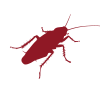
Pest Control Services
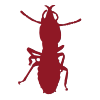
Termite Treatment
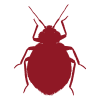
Bed Bug Treatment
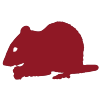
Rodent Control
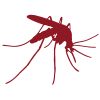
Mosquito Control
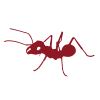
Ant Control
WHAT WE CAN DO FOR YOU
- Personalized excellent "live" customer service.
- Minimize your pest problem for good.
- Increase the value to your business.
- We are State Licensed. Bonded & Insured - saves you money
- We are a local, family-owned business with a wide range of experience devoted to sustainable environmental health
- Monthly, quarterly, yearly special services as needed
PEST CONTROL SERVICES INCLUDE
- Identification and treatment for the existing pest problem We will visit your home to determine the extent of your current pest infestation and locally treat infested areas.
- Perimeter treatment On our first visit, we will perform interior and exterior perimeter treatments to prevent further infestation.
- Quarterly treatment thereafter, we service your home every 3 months including an exterior perimeter treatment.
- Customized services available including monthly and yearly treatments.
WHO WE ARE
Shumaker's Pest Control is a family-owned company utilizing the best practices in the industry and exceeding each of our client’s expectations by providing exceptional quality and personal service.
We would welcome the opportunity to earn your trust and deliver you the best service Shumaker's Pest Control has to offer.
PROFESSIONAL ASSOCIATIONS
